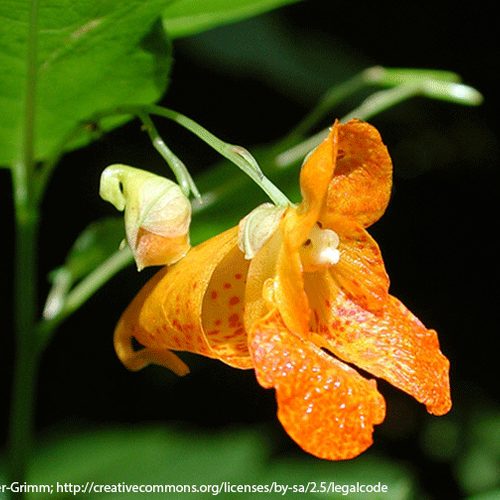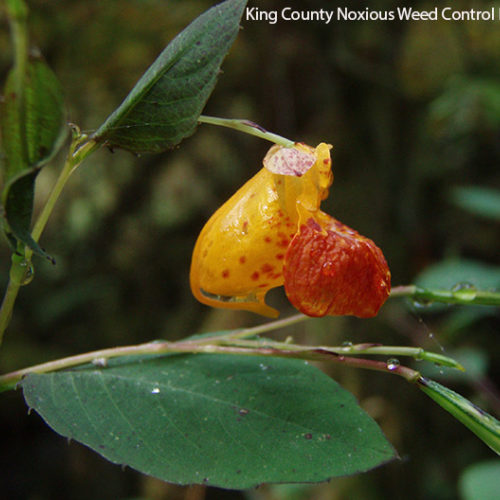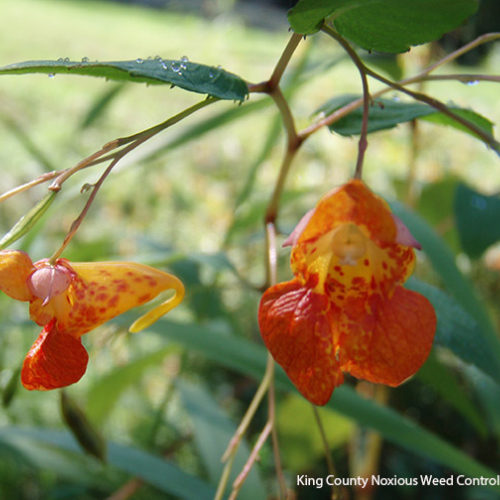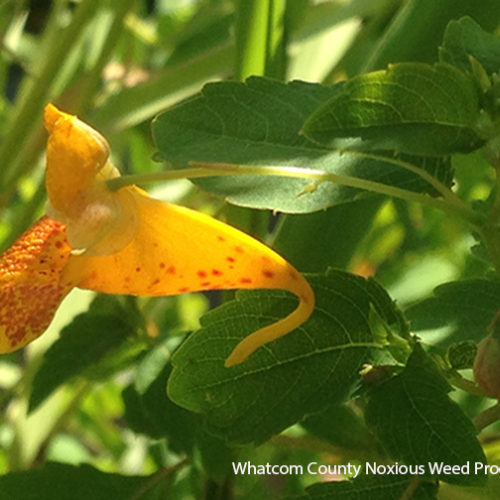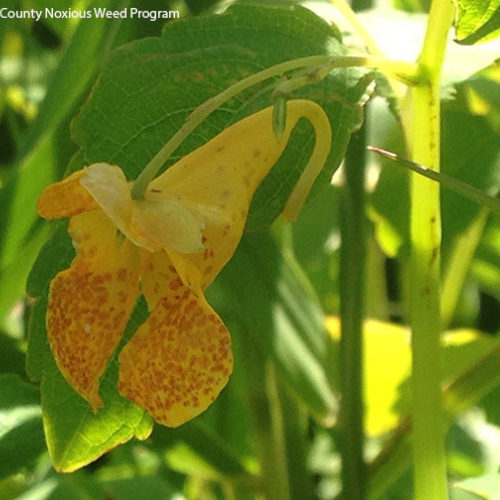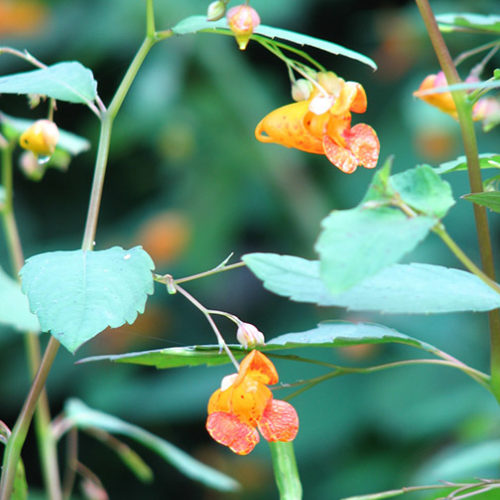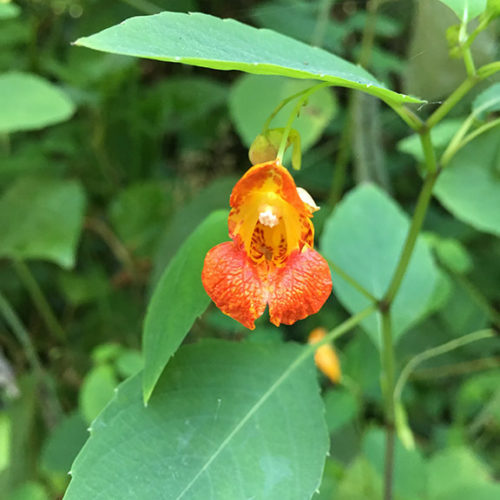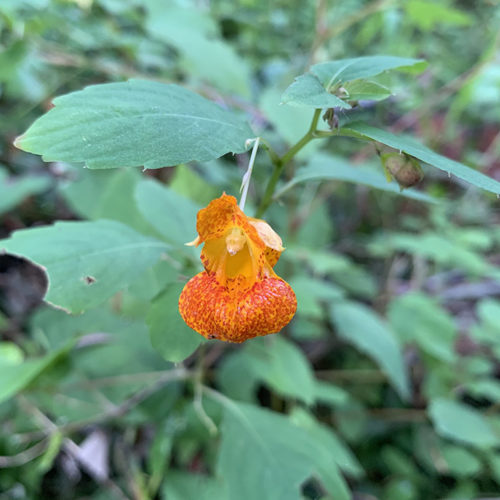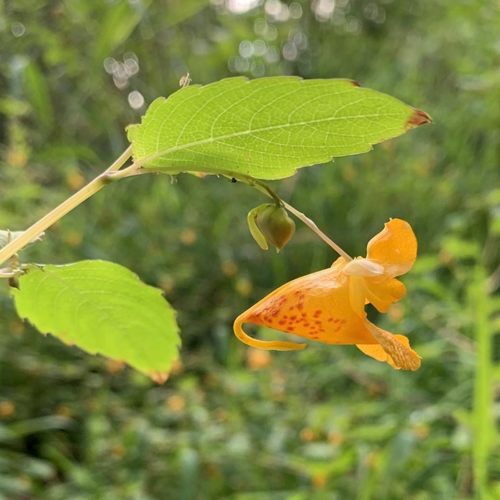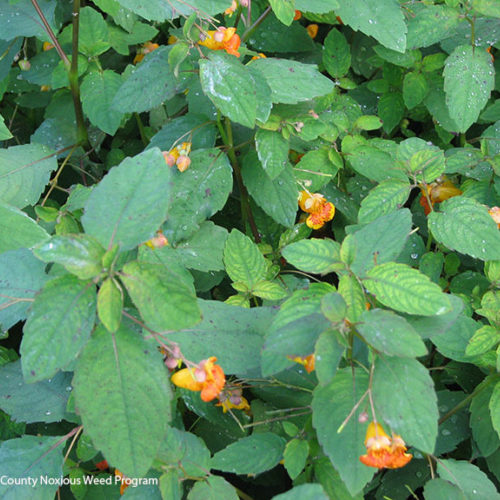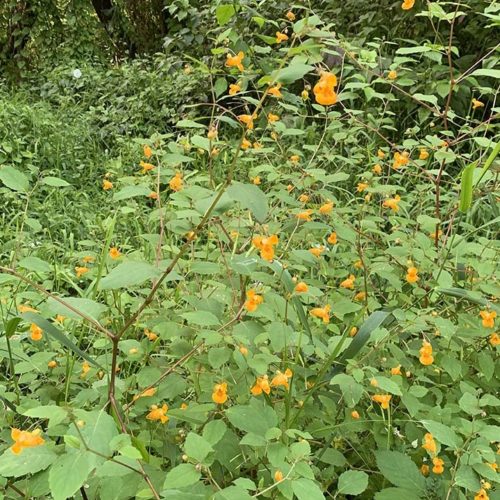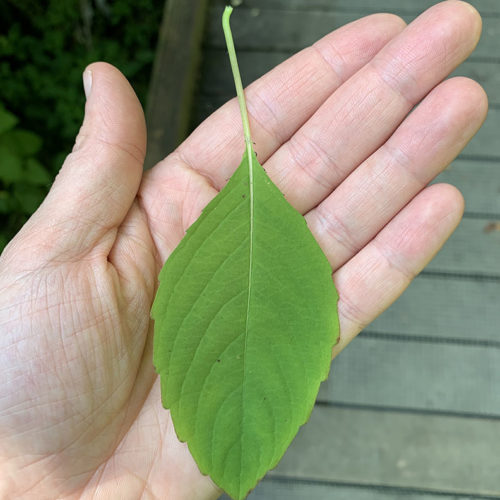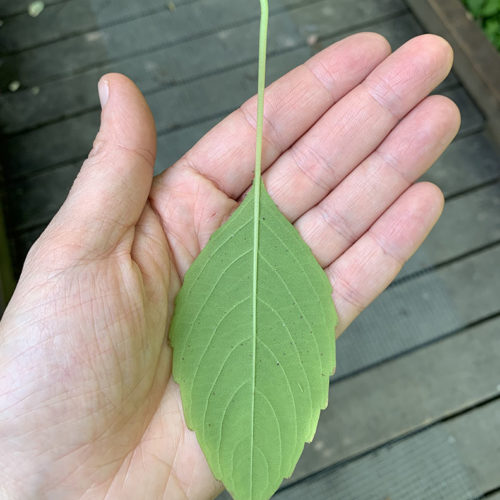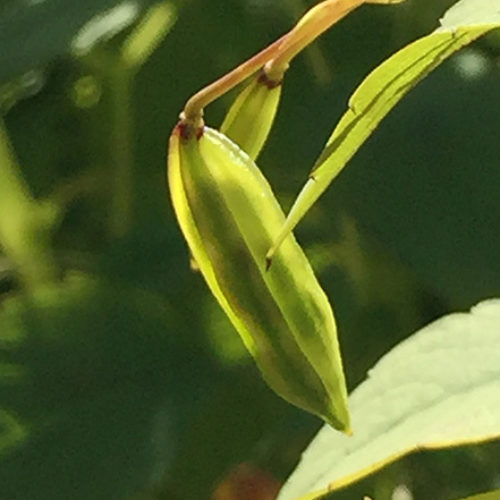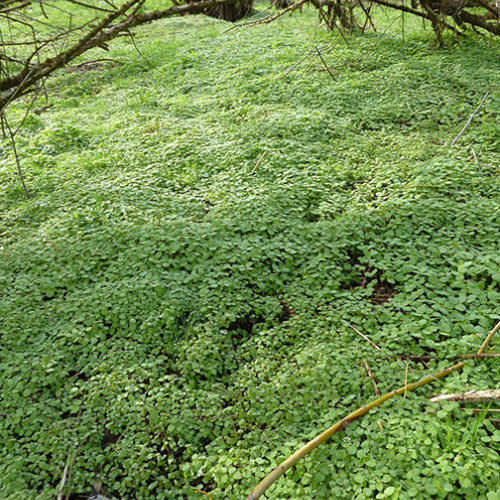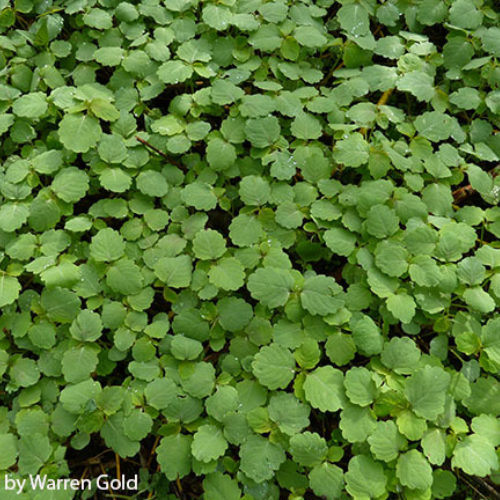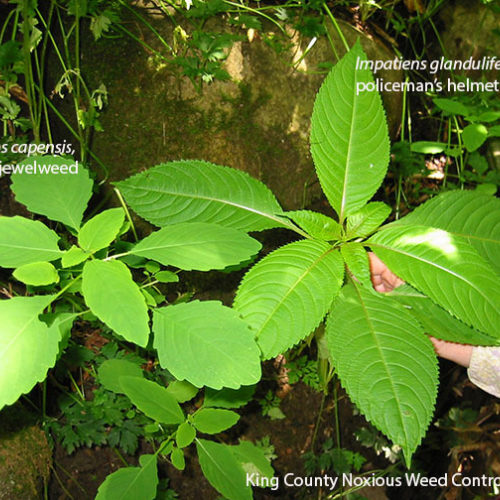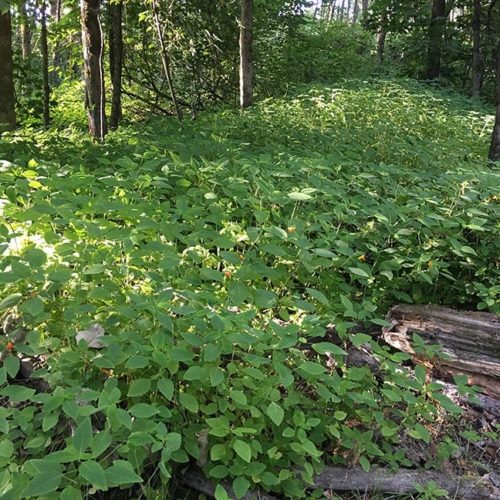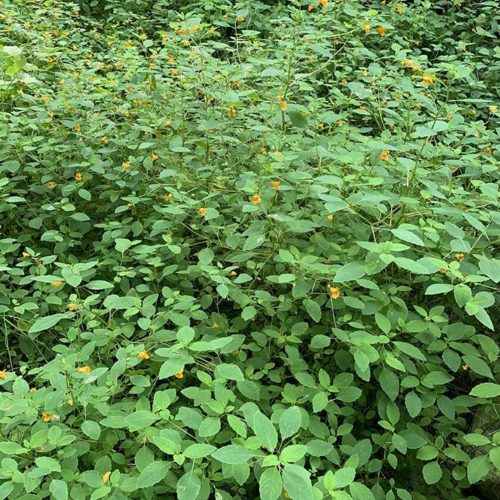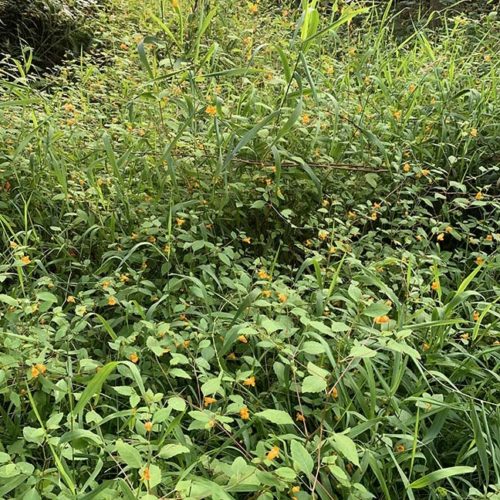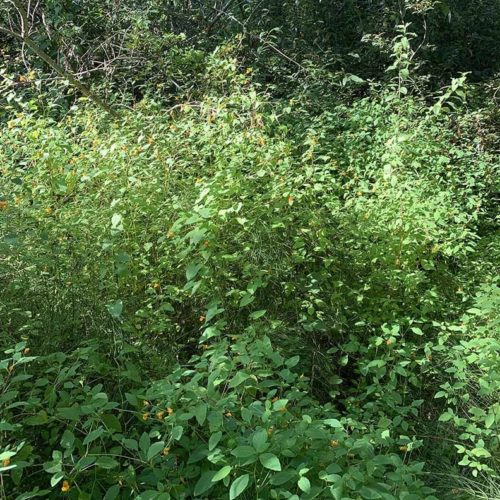Spotted Jewelweed
Impatiens capensis
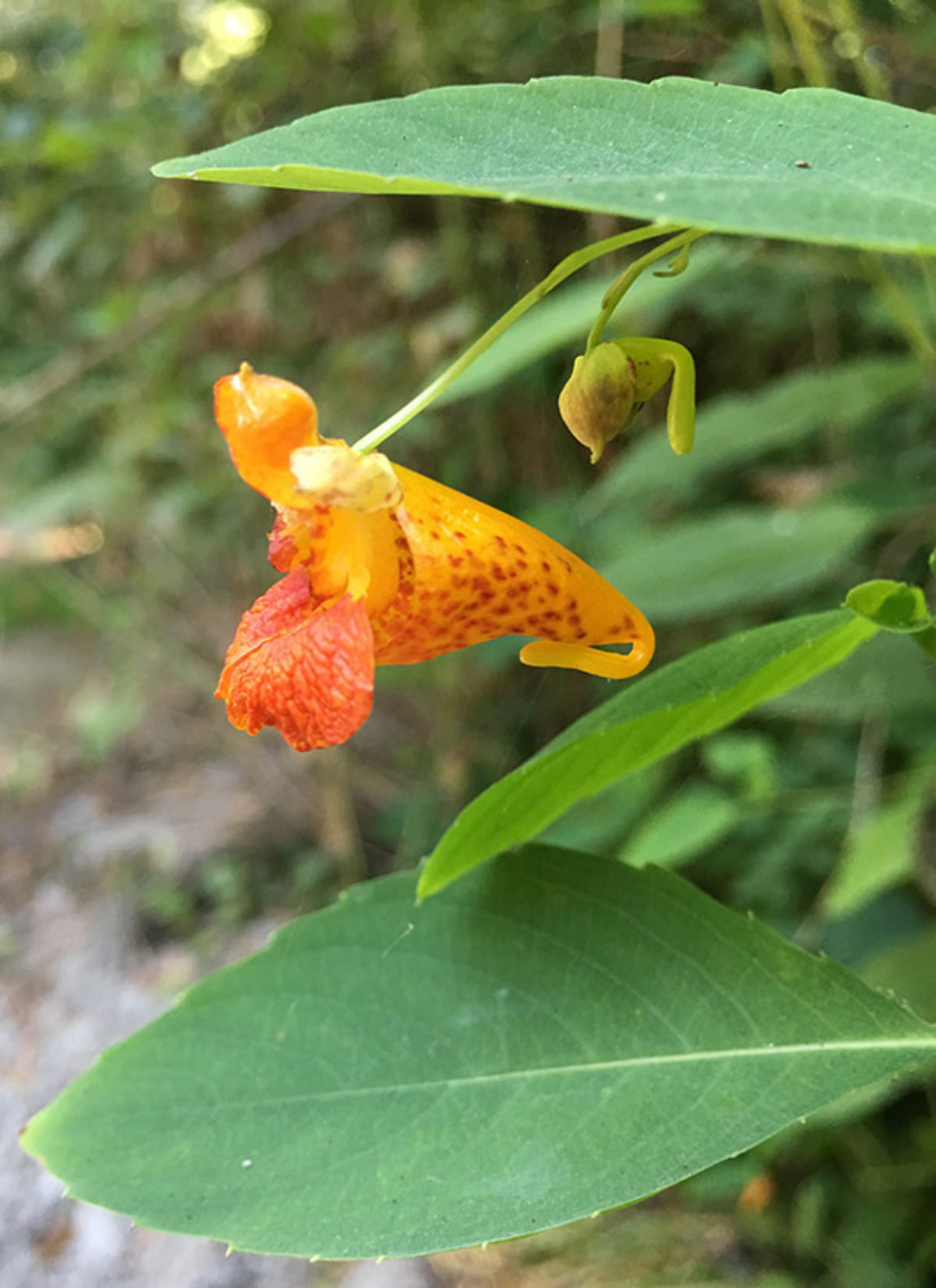
Family: Balsaminaceae
Other Common Names: Spotted touch-me-not
Weed class: C
Year Listed: 2018
Native to: Native east of the Rocky Mountains in the United States and Canada
Is this Weed Toxic?:
The genus of Impatiens contains napthoquinone, which may cause mild to moderate irritation of the digestive track.
Legal listings:
This plant is also on the Washington State quarantine list. It is prohibited to transport, buy, sell, offer for sale, or distribute plants or plant parts of quarantined species into or within the state of Washington or to sell, offer for sale, or distribute seed packets of seed, flower seed blends, or wildflower mixes of quarantined species into or within the state of Washington. Please see WAC 16-752 for more information on the quarantine list. For questions about the quarantine list, contact the Washington State Department of Agriculture's Plant Services Program at (360) 902-1874 or email PlantServices@agr.wa.gov.
Why Is It a Noxious Weed?
This is a new noxious weed for 2018. Spotted jewelweed has spread rapidly since it was first documented in Washington. Plants are widespread in certain lowland areas and appear to still be increasing. Seedlings of spotted jewelweed can form dense carpets that can compete with native species and are difficult to control. Spotted jewelweed is able to hybridize with the Washington native, spurless jewelweed, Impatiens ecornuta.
How would I identify it?
General Description
Spotted jewelweed is an annual that grows around 2 to 5 feet tall and blooms in late summer with two kinds of flowers--reduced, self-fertilizing flowers and showy, open flowers. Flowers are orange and have recurved spurs, are typically spotted, and form capsules after pollination. Capsules have the ability to explosively open and propel seeds a short distance.
Flower Description
Flowers are around 1 inch long with spots (though there is a rare spotless form); having an abrupt and convex taper to recurved spur, spots primarily ventral, coarse and dense. Flowers are typically orange and have red to orange colored spots. Rarely flower color may vary and the petals can be white, cream or pale yellow with bright pink spots.
Leaf description
Leaves are alternately arranged and have petioles 0.8 to 1.6 inches (2-4 cm) long. Leaf blades are elliptic to ovate (egg-shaped) and 1.2 to 4.7 inches (3-12 cm) long. Leaf margins have rounded, serrated teeth (look somewhat scalloped), with a sharp point.
Stem description
Stems are upright, often branched, glabrous (hairless), and can be tinged red. Height range estimates vary from up to 4.9 feet (1.5 meters), to 7.9 to 31.5 inches (20-80 cm) tall.
Fruit Seed Description
Flowers produce a cylindrical to club-shaped capsule, about 1 inch long,which expels seeds when touched. Seeds can be expelled up to 4 to 6 feet. Seeds are black when mature.
May Be Confused With
There is an excellent key in the article: Botanical Electronic News with Impatiens article by Peter Zika (scroll down) along with a link to pictures that support the article. A table based on this article and other information can be found in our written findings, beginning on page 6.
Where does it grow?
Spotted jewelweed grows primarily in western Washington on moist soils at low elevations and is found in forests, lake and pond edges, riverbanks, sloughs, disturbed wetlands and sunny roadside ditches or canals. Click here to view a county level distribution map of spotted jewelweed.
How Does it Reproduce?
Plants reproduce by seed.
How Do I Control It?
There is limited information available on control methods for spotted jewelweed. Control methods used for policeman’s helmet, Impatiens glandulifera, a Class B noxious weed in Washington, can be adapted for use on spotted jewelweed. Plants may have some seeds that remain in the seedbank after the first year so it is important to manage and monitor sites and provide additional control when necessary. Removing invasive species can open up a habitat to re-invasion if follow up management does not occur. By planting a variety of desirable species, a community will be present to help provide competition and shade weed seedlings and to also provide a food source for pollinators. When possible, carry out control methods when pollinators are not active on plants. Also, make sure to clean shoes, clothing, and equipment when leaving infested areas to prevent spreading seed to new locations.
Mechanical methods:
Spotted jewelweed has a shallow root system and can easily be hand-pulled when growing in damp soils. Make sure to remove the roots, especially in drier soils where plants may break off. If the plants do not have seed capsules, they can be crushed and left on site in a dry place to compost (King County Noxious Weed Control Program 2016--see link below). If plants have seed capsules, make sure to bag and put them in the trash (King County Noxious Weed Control Program 2016). It is important to properly identify spotted jewelweed plants before removal to avoid accidentally removing native Impatiens species. Plants will need to be identified while in bloom and care needs to be taken as native Impatiens may grow among spotted jewelweed plants.
Peter Zika’s 2009 article in the Botanical Electronic News “Jewelweeds and touch-me-nots (Impatiens, Balsaminaceae) in the Pacific Northwest of North America” provides a key along with a set of color images that can be used to identify Impatiens species http://www.ou.edu/cas/botanymicro/ben/ben408.html.
Cultural Methods:
Provide competition to spotted jewelweed by planting, seeding and promoting native plants in areas after control has taken place.
Biological Control:
There is currently no biological control agent used to control spotted jewelweed.
Chemical Control:
Large populations of spotted jewelweed may need chemical control for management. Make sure to
survey populations before herbicide use to avoid treating native Impatiens species. Spotted jewelweed is not currently included in The Pacific Northwest Weed Management Handbook, but check back as this resource is continually updated: https://pnwhandbooks.org/ . For questions about specific herbicide use, please contact your county noxious weed control board.
Please note: Use of pesticides in water is regulated in Washington. All applicators must have an aquatic
endorsement on their pesticide applicators’ license, which is issued by the Washington State Department of Agriculture. In addition, coverage under a permit issued by the Department of Ecology is
required. See http://www.ecy.wa.gov/programs for details.
In general, use herbicide control in combination with other control methods to reduce usage when
possible. When using a foliar spray, treat plants when pollinators are not present or are the least active
For More Information
Please read the draft written findings of Impatiens capensis
WTU image database information on Impatiens capensis
King County Noxious Weed Control Program: management information for policeman's helmet. These methods can be used for jewelweed.
Botanical Electronic News with Impatiens article by Peter Zika (scroll down)



